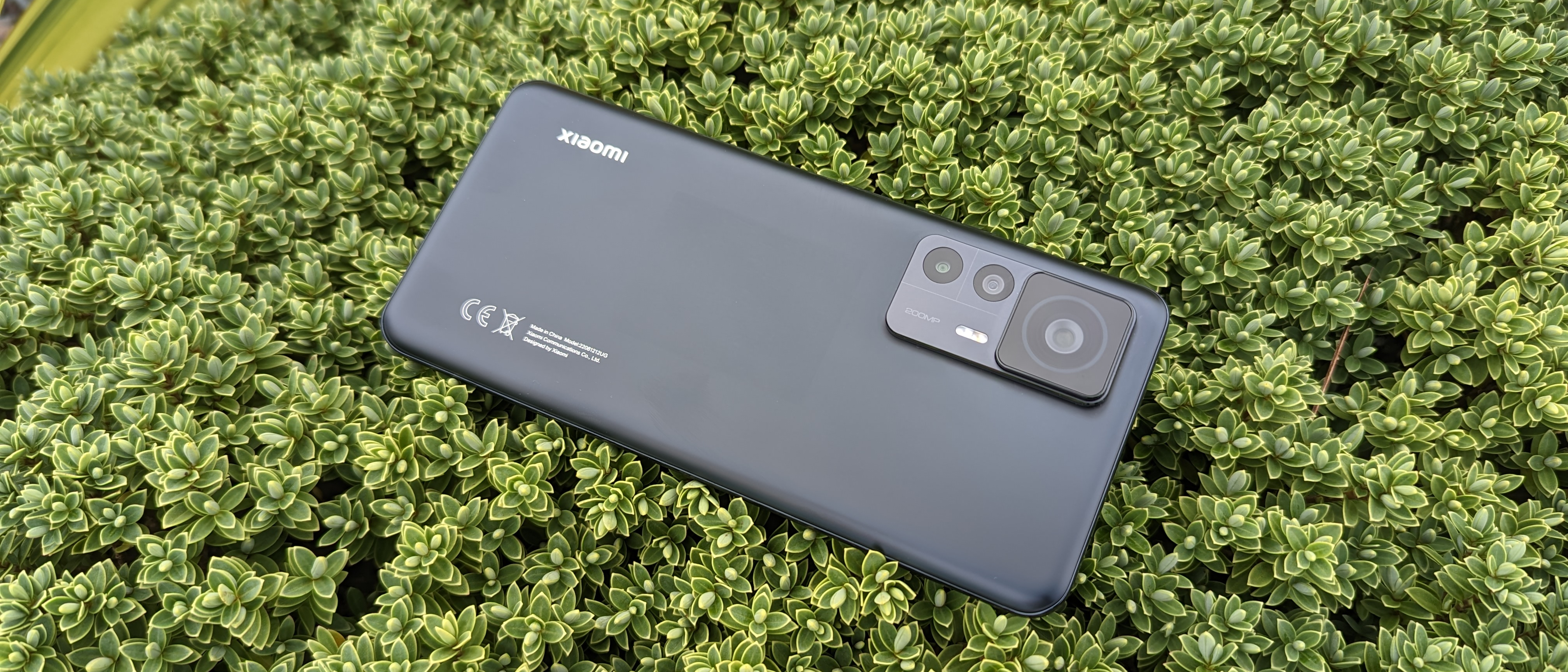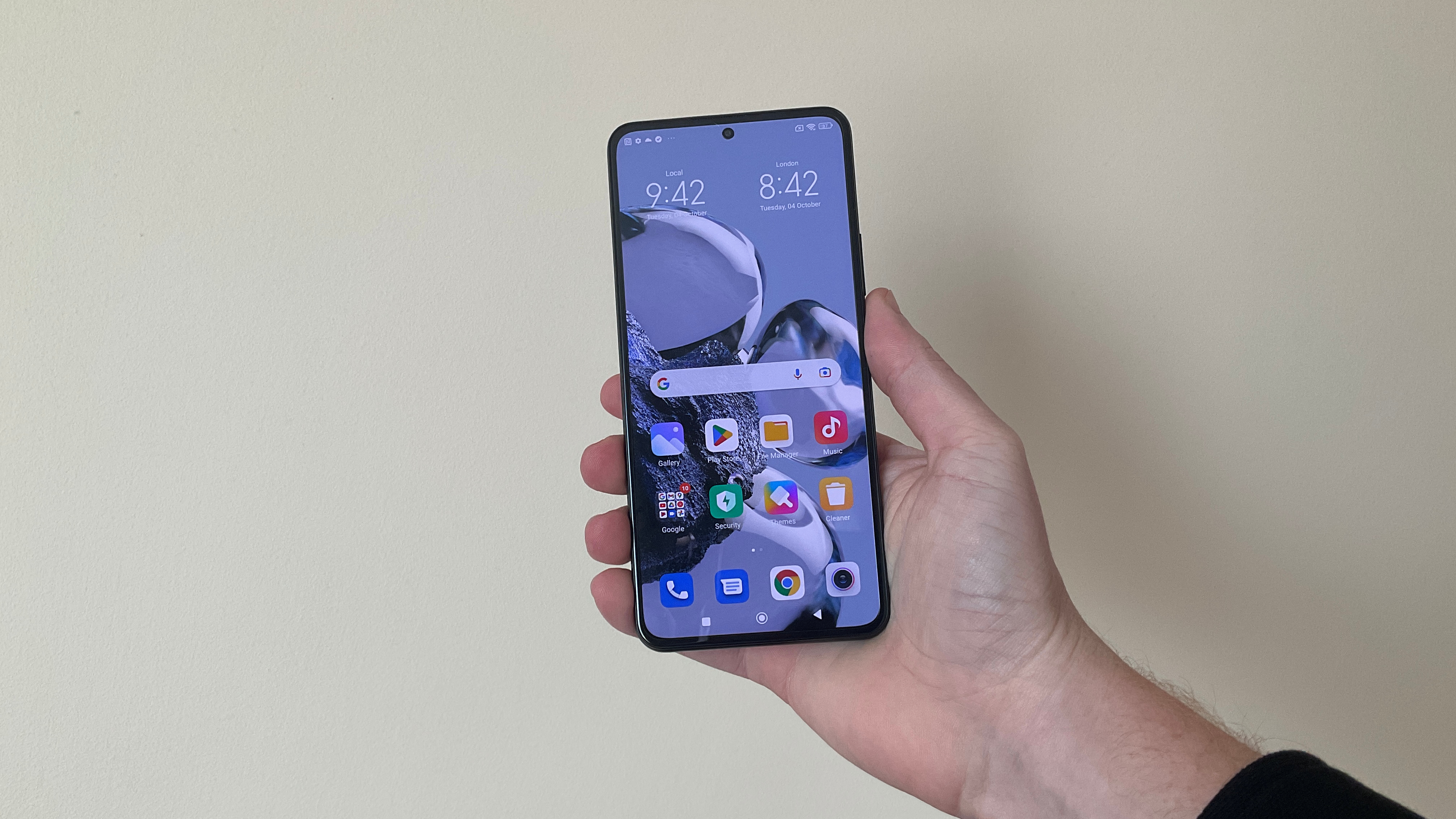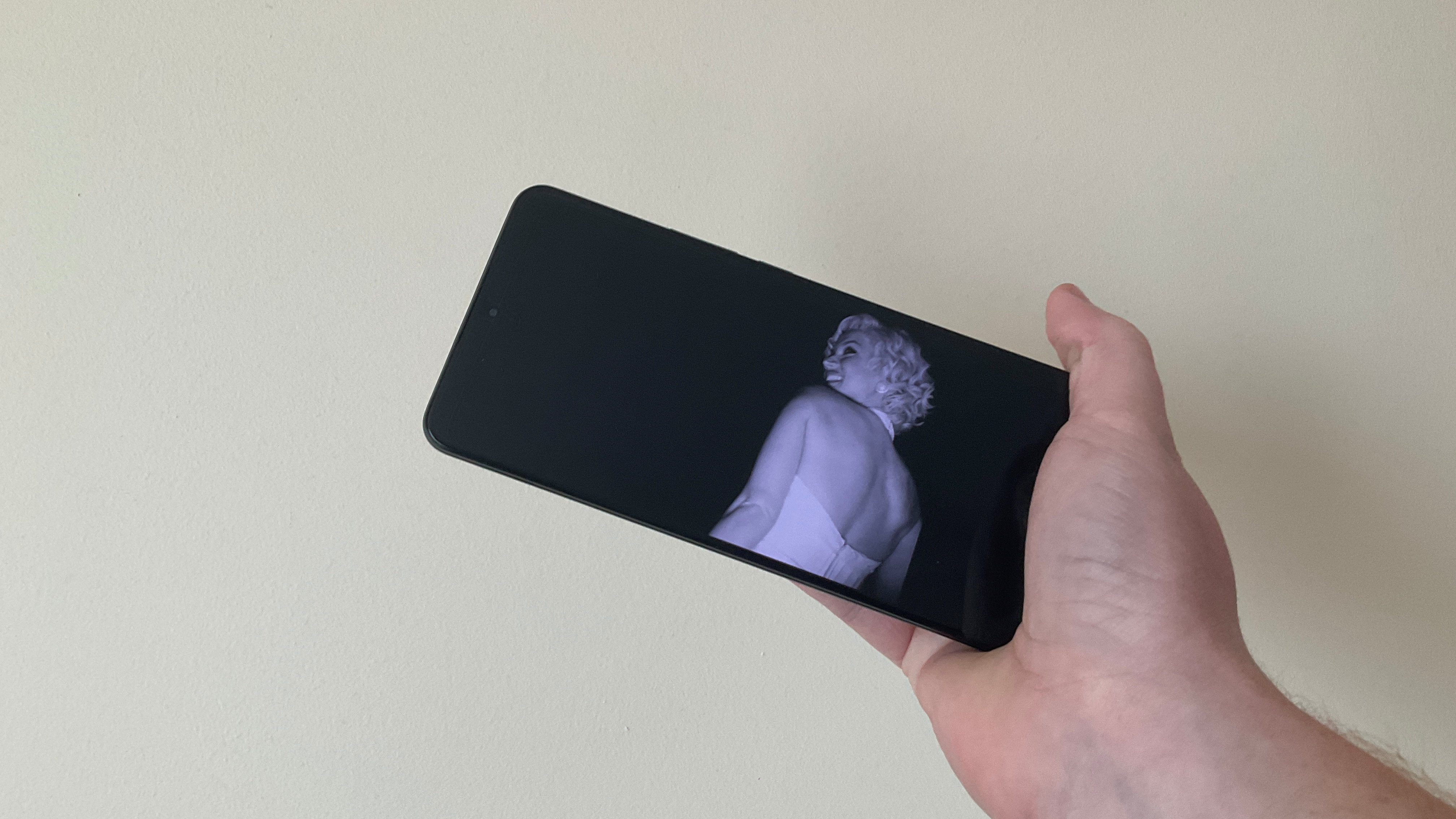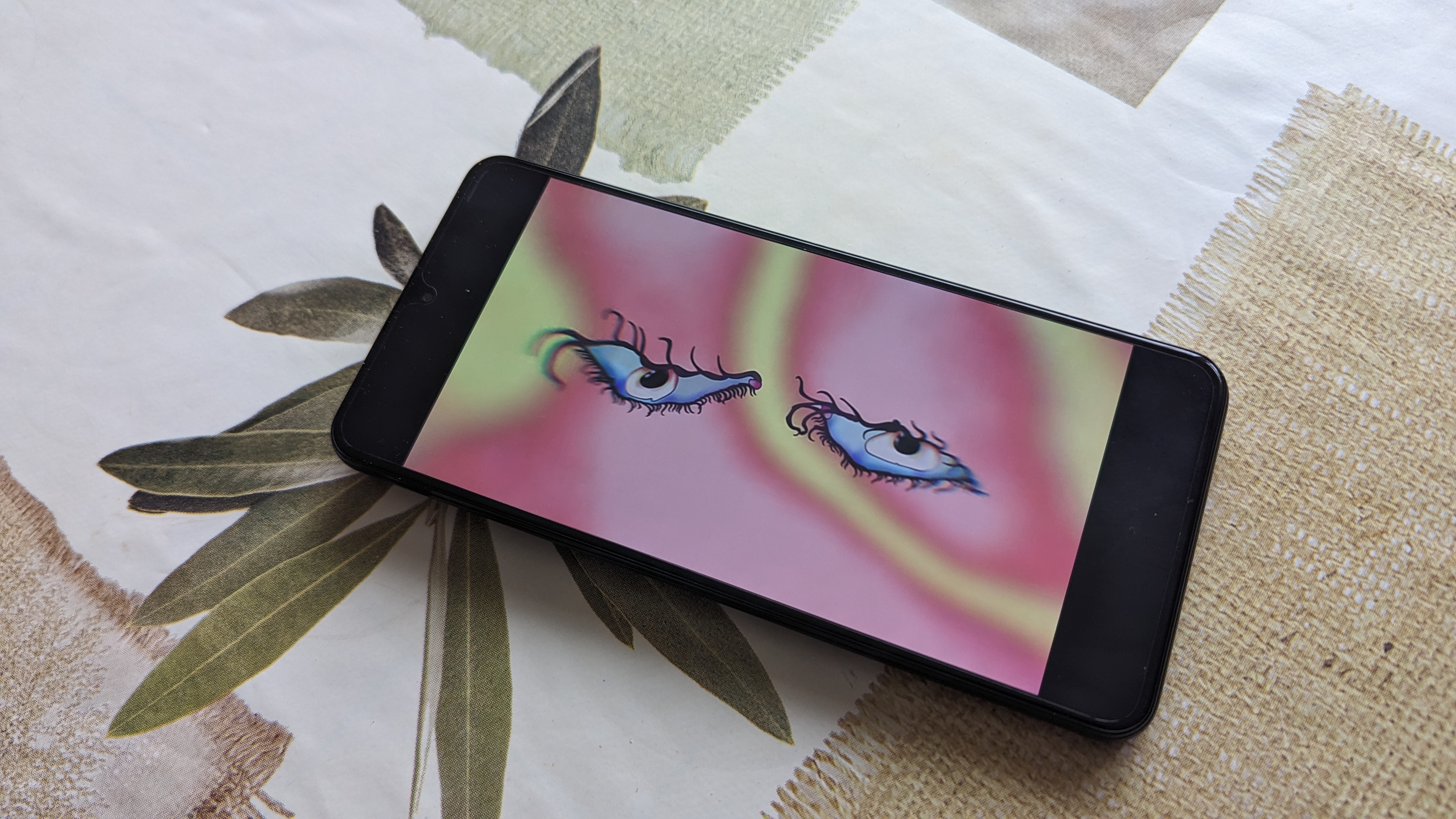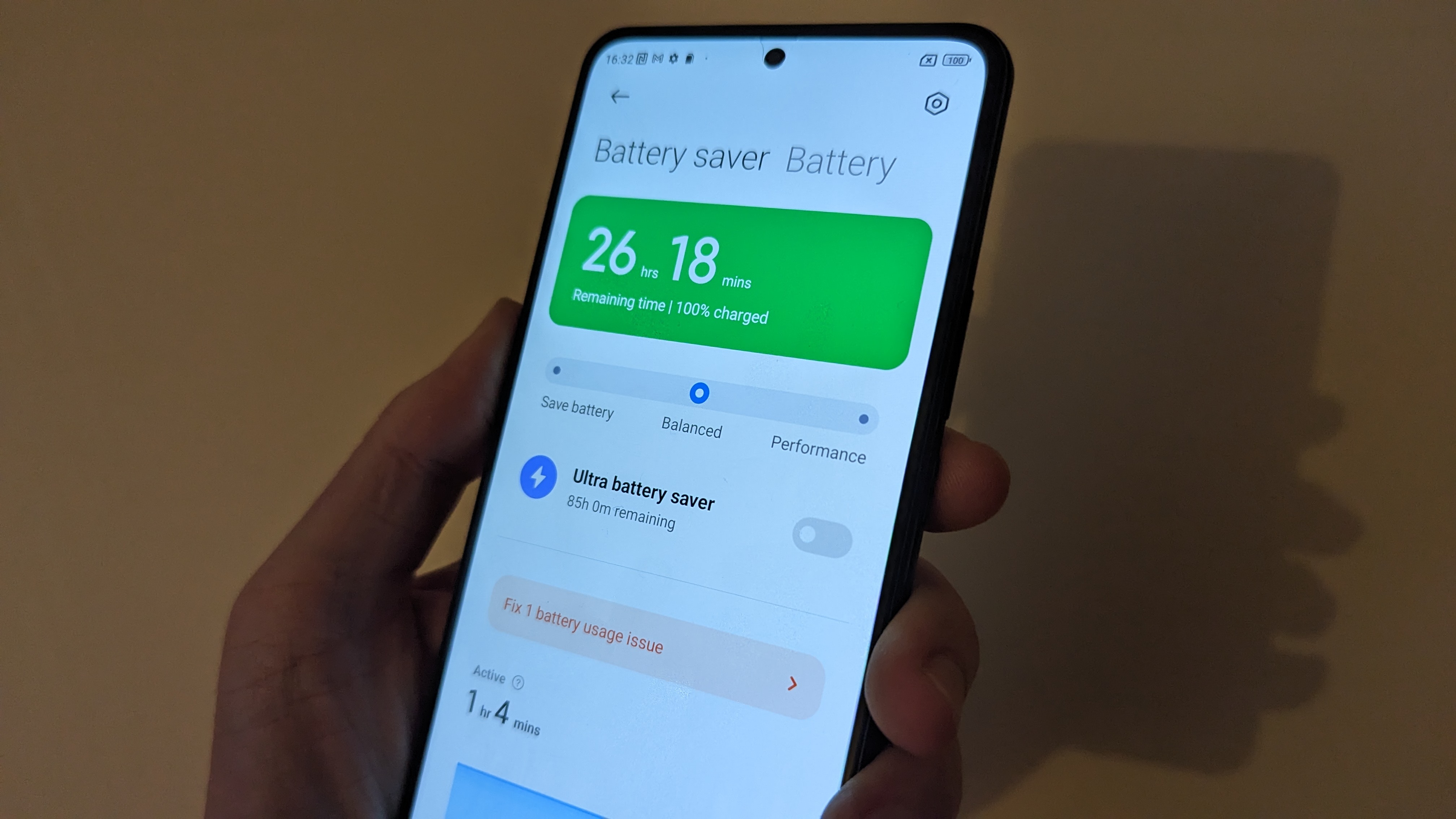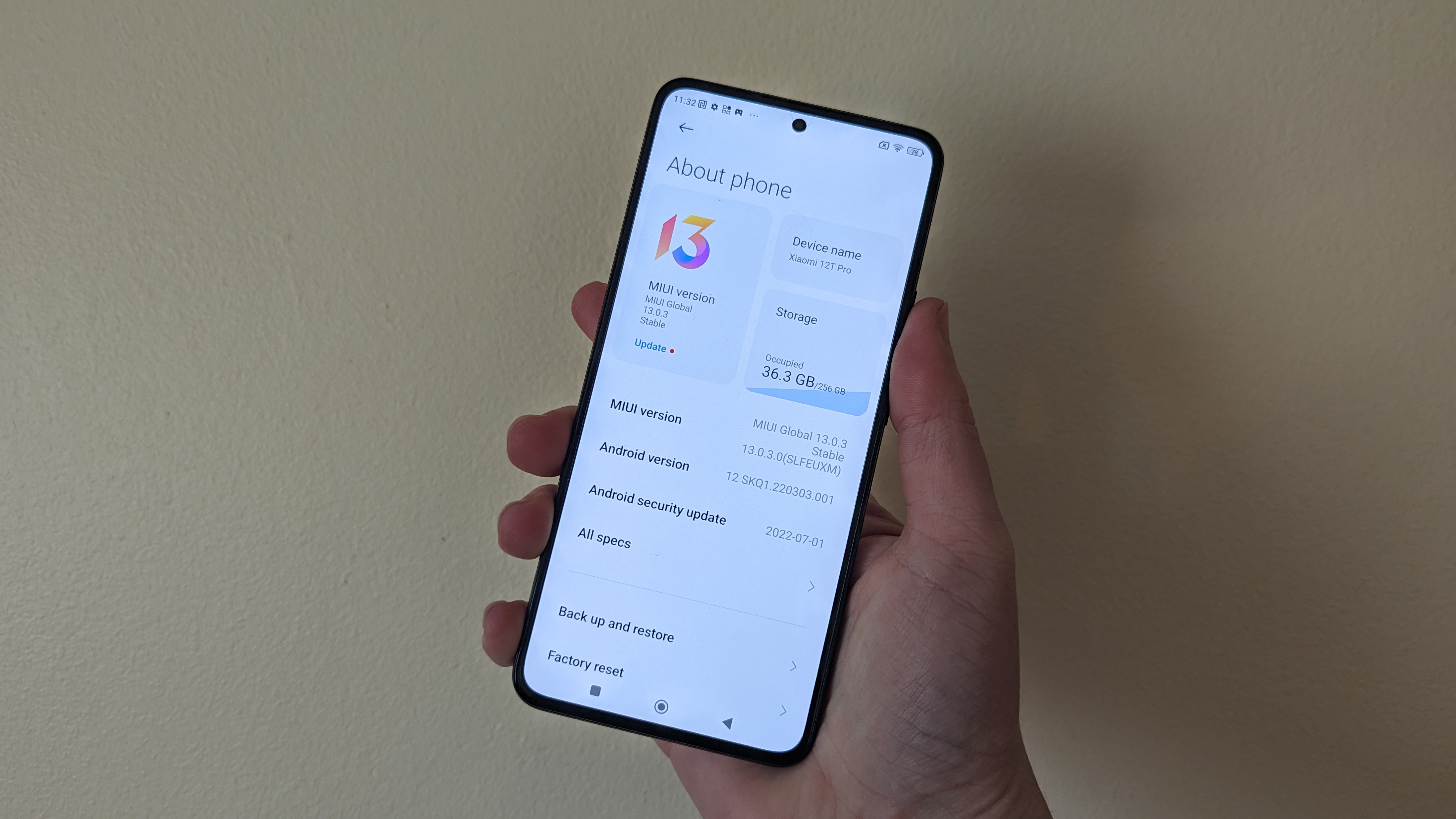Laptop Mag Verdict
There’s little else you could want from a high-end smartphone that Xiaomi 12T Pro doesn’t offer. From the dazzling 6.7-inch 120Hz AMOLED display and strong battery life to the powerful Snapdragon 8+ Gen 1 chip and 200MP camera, it’s a flagship at an impressively affordable price.
Pros
- +
Superb performance
- +
Dazzling 120Hz AMOLED display
- +
Competitive price
- +
Incredible battery life
- +
200MP wide camera is crazy…
Cons
- -
…but not anything special
- -
Weak supporting cameras
- -
Bland design
Why you can trust Laptop Mag
Price: £699 (around $677)
OS: Android 12/ MIUI 13
Display: 6.7-inch 120Hz AMOLED
CPU: Snapdragon 8+ Gen 1
RAM: 12GB
Rear cameras: 200MP wide (f/1.22), 8MP ultrawide (f/2.2), 2MP macro (f/2.4)
Front camera: 20MP (f/2.24)
Storage: 256GB
Size: 6.4 x 2.98 x 0.33 inches
Battery: 5,000mAh
Weight: 7.2 ounces
The Xiaomi 12T Pro has come to stake its claim as the most affordably priced flagship phone on the market, packing a Snapdragon 8+ Gen 1 chip, a 120Hz AMOLED display, ridiculously fast 120W charging, and a 200MP camera — all at a mid-range price.
The smartphone giant already struck gold in the Xiaomi 12 and Xiaomi 12 Pro, with the latter even going so far as to outperform the iPhone 13 Pro and Samsung Galaxy S22 in some key areas.
In the new 12T Pro, however, Xiaomi takes things up a notch by equipping it with an updated processor, an even bigger 5,000mAh battery, and a "pro-grade 200MP imaging system." That’s a lot of megapixels, right? Not even the highly praised 108MP camera on the Samsung Galaxy S22 Ultra can match that.
To put it plainly, the 12T Pro is a better yet cheaper model of the Xiaomi 12 Pro. That’s pretty impressive, especially to those hunting down real value for money.. However, as far as Android phones go, this is as generic as it gets. While it may not have that unique flair to stand out from the pack, it doesn’t take away from the highlights the Xiaomi 12T Pro delivers. It’s one of the best smartphones you can pick up, especially at its price.
Xiaomi 12T Pro price and configurations
The Xiaomi 12T Pro is affordably priced for a flagship-level smartphone, starting at £699/€749 on the Mi Store. In the U.K., only the 8GB+256GB option will be available, but other regions can choose up to 12GB+256GB. It’s trickier to get Xiaomi’s new flagship phone in the U.S., but prices are around $677 in third-party retailers such as Amazon.
With the flagship specs it boasts, such as the Snapdragon 8+ Gen 1 chip and 200MP main camera, it’s incredible what Xiaomi could fit in a sleek and powerful Android phone at this price. In fact, those who opted for the Xiaomi 12 Pro ($999) might be kicking themselves knowing that the 12T Pro offers an improved spec list at a more affordable price.
Compared to other recent flagships, including the iPhone 14 ($799/£849) and Samsung Galaxy Z Flip 4 ($999/£999), the Xiaomi 12T Pro gets you way more bang for your buck — on paper, at the very least.
Xiaomi 12T Pro design
Picking up the 12T Pro, the first detail I noticed is that the phone's design is nearly identical to the Xiaomi 12 series: the same raised rectangular array housing the primary wide-angle camera lens, but this time a square shape instead of a circular lens.
You're also getting the same pleasantly rounded back with a matte finish, a trio of buttons (volume up/down and power), and the USB-C port and SIM card slot on the bottom. So far, so Android. The 12T Pro's size is ever so slightly different at 6.4 x 2.98 x 0.33 and weighing 7.2 ounces when compared to the Xiaomi 12 Pro (6.4 x 2.94 x 0.32 inches, 7.23 ounces). It’s also slightly bigger than the iPhone 14 (5.78 x 2.81 x 0.31 in inches, 6.07 ounces) and Samsung Galaxy Z Flip 4 (6.7 x 2.8 x 0.2 inches, 6.6 ounces), but still, you’re getting a sleek phone that’s comfortable to hold in one hand.
The 12T Pro comes in three color options: Blue, Silver, and Black. Do these options sound as bland as I think they are? (That’s rhetorical). While its plastic frame just about passes as “premium-looking,” the 12T Pro has a lackluster, generic design. In fact, I’m pretty sure you’d spot a picture of it in the dictionary next to “Android phone.” There are those who don’t care about what a phone looks like, especially when the 12T Pro’s display is the real draw of attention and you’ll likely slap a snazzy phone case on it anyway. However, it’s hard to picture a scenario where someone asks “is that the new Xiaomi phone?” It’s more, “what phone is that?”
Another downside to its design is the lack of IP rating, meaning you’ll want to be careful taking this outdoors in wet environments or accidentally slipping out of your hand. Alas, these are likely the sacrifices Xiaomi made to bring the price of the 12T Pro down. That’s OK if you’re not fussed about a bland design or any sort of rated resistance, but it’s hard to make the 12T Pro stand out in a sea of flagships with ever-increasing unique feature sets.
Sign up to receive The Snapshot, a free special dispatch from Laptop Mag, in your inbox.
Xiaomi 12T Pro display
The Xiaomi 12T Pro has a slightly smaller 6.67-inch (2712 x 1220) CrystalRes AMOLED DotDisplay compared to the Xiaomi 12 Pro, along with a lack of curved edges. But as you might expect, the screen is dazzling to watch shows and play games on.
Boasting a 120Hz refresh rate with adaptive sync down to 30Hz, 500 nits of brightness, over 68 billion colors, and support for HDR10+, you bet Ana de Armas' Marilyn Monroe looks stunning in Netflix's Blonde. There is sharply defined contrast between the deep blacks and bright whites, as the spotlight shines on Monroe during the opening scene, and the incredible technical structure briefly shown inside the spotlight shows off each intricate detail — right down to the churning gears and slight smudges on the spotlight’s glass.
The flat display leaves minimal bezels, the 20:9 aspect ratio makes it great for scrolling through websites or social media, and that buttery smooth refresh rate makes it great for gaming, too. Plus, the fact that the refresh rate is dynamic by default means the panel adapts to what you’re doing — an important battery life saver. There’s even a “Reading mode” that adjusts the colors and textures so what you see is easier on the eyes (although, I only turned it on one time).
Another Xiaomi phone, and display triumph.
Xiaomi 12T Pro audio
Audio-wise, everything sounds crystal clear with a bit of "oomph" thanks to the dual speakers from Harman Kardon. It makes for a strong sound output, especially when firing off a round in Call of Duty Mobile or listening to tunes.
I was in the mood for some funky jams and threw on “Reach Out “ by Red Hot Chili Peppers. Anthony Keatis’ slow-paced, ballad-like vocals resounded through the speakers, with the shift to the satisfyingly heavy electric guitar strums during the chorus being crystal clear with no distortion. The light plucks of John Frusciante’s masterful strings combined with Chad Smith’s precise beats was a delight to hear. What’s more, the 12T Pro could blast that tune, along with other songs, loud.
Unfortunately,there's no 3.5mm headphone jack in sight, but we'll take the strong speaker audio nevertheless and (thanks to Bluetooth 5.2), you can link up any of the best true wireless earbuds to it with no interference.
Xiaomi 12T Pro performance and graphics
The Xiaomi 12T Pro also boasts a Snapdragon 8+ Gen 1 chip based on TSMC's 4nm process, along with up to 12GB of RAM and 256GB for storage. In real world use, all of this power means flipped through multiple Chrome tabs, games, and streaming Netflix in the background without any hiccups.
In the Geekbench 5 benchmark test, it got an impressive multi-core score of 4,136. Compared to the Xiaomi 12 Pro (3,783, Snapdragon 8 Gen 1) and even the Samsung Galaxy Z Flip 4 (4,105, Snapdragon 8+ Gen 1), that's an impressive feat. Sure, the iPhone 14 (4,554, A15 Bionic) is unsurprisingly the king of performance, but the more affordable 12T Pro isn’t too far behind it.
It’s the 3DMark Wild Life Extreme benchmark where the 12T Pro starts to slack. It achieved an average of 16.3 frames per second. That’s a drastic drop compared to the Xiaomi 12 Pro’s blistering 61 fps. However, when firing up demanding games like Call of Duty Mobile, the 12T Pro offers the option to put on Game Turbo mode, which boosts performance drastically. According to the specs shown, it was pulling off 120 fps, and movement on screen reflected these smooth frame rates. Whether these numbers ring true or not, it’s clear the 12T Pro is more than capable of playing demanding games with fluid frame rates.
Clearly, the Xiaomi 12T Pro doesn't slack when it comes to power, and that's impressive for a mid-range price.
Xiaomi 12T Pro battery life and charging
This time, Xiaomi decided to fit a 5,000mAh battery capacity in the 12T Pro instead of the 4,600mAh in the 12 Pro. The latter already found a place among the phones with the best battery life, and with the 120W HyperCharge charge, that means you can charge the 12T in no time. Think up to 69% from 0% in 15 minutes, and if that sounds ridiculously fast, that’s because it is.
Sure, the 12T Pro doesn’t come with wireless charging, but with a 120W charger in the box, I’d go for the wired option any day. Xiaomi claims the phone can “be ready in just 19 minutes,” but it was closer to 22 minutes to reach a full charge from 0% to 100%. I’m not complaining; that’s beyond what a majority of other popular smartphones can do.
As for real world stamina, the Xiaomi 12T Pro impresses with its different battery-saving options to help the 12T Pro last for as long as possible (more on the later). After a day of heavy usage, which included watching YouTube videos and Netflix shows, playing Call of Duty: Mobile, scrolling through social media, snapping pictures and shooting video, along with phone calls and messaging, the phone lasted just over 12 hours (9 a.m. to 9:10 p.m.). With moderate usage, I could easily squeeze a second day out of this phone.
That’s better than the Xiaomi 12 Pro (11 hours and 29 minutes), but it’s understandable thanks to the bump up to a 5,000mAh battery capacity. All in all, this phone is made to last.
Xiaomi 12T Pro cameras
Then there's the 200MP main camera with a 1/1.22-inch sensor. That's quite the jump from the 50MP main wide camera on the 12 Pro, and Xiaomi states the three major benefits of the new-and-improved camera system are "unprecedented image clarity, low-light capabilities, and quick focus." Does this hold up? Well, sort of.
The main lens features f/1.69 aperture, 2x in-sensor zoom, Night mode and Ultra Night Video with up to 8K resolution, along with motion-tracking focus, motion-capture, and eye-tracking focus. You'll also find an 8MP ultra-wide angle camera, 2MP macro camera, and 20MP front camera (different from the 50MP ultra-wide and macro the 12 Pro offered). Just by the numbers alone, you can tell the ultra-wide and macro lenses can’t keep up with the big ‘ol main shooter. It meant I would rarely want to use the other lenses when the quality of the 200MP camera was beyond the other two.

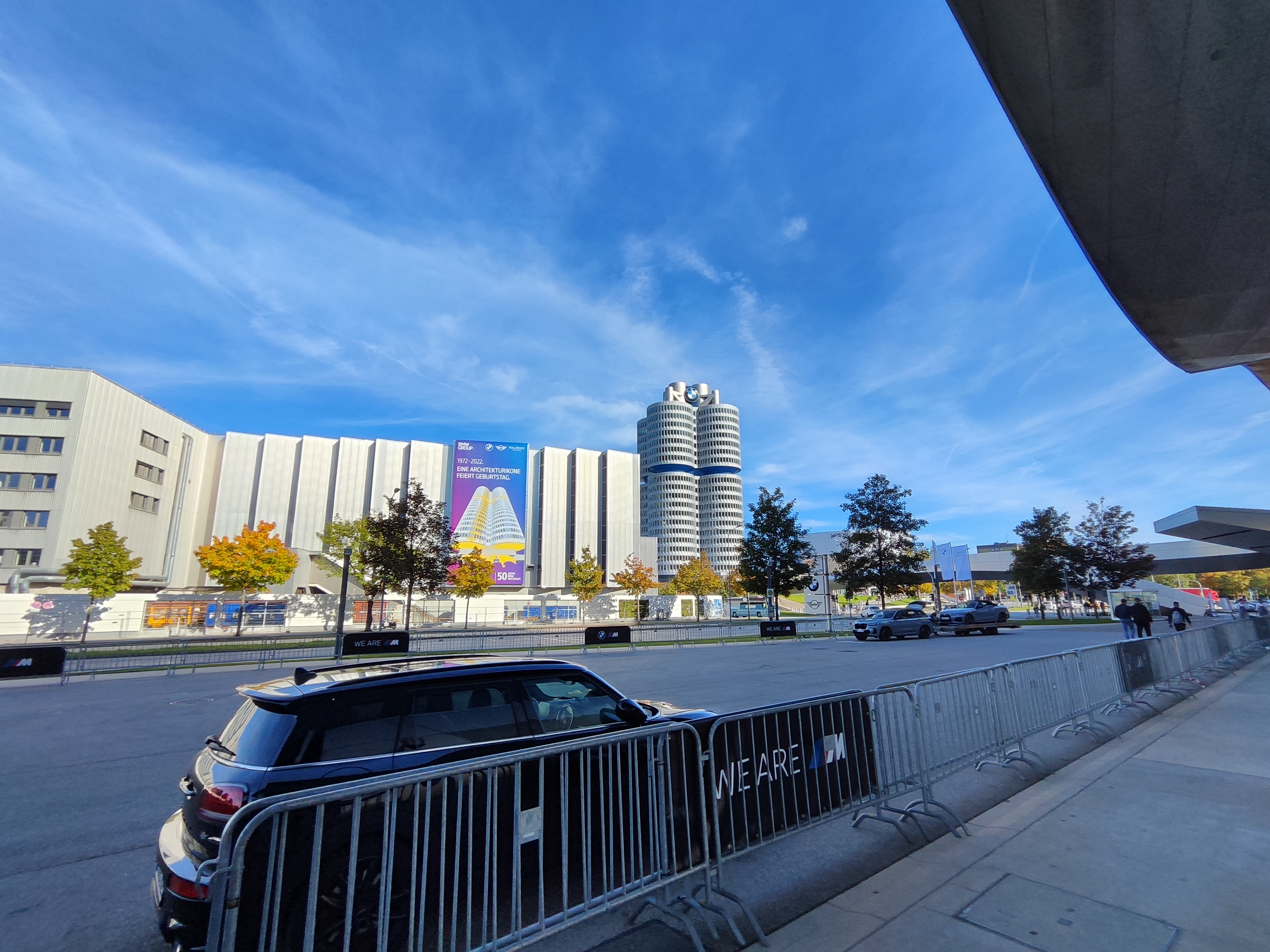

Being able to stroll around Munich, Germany with the Xiaomi 12T Pro in hand, I took some shots of BMW central (a.k.a BMW Welt). Even from afar, the famous car brand’s logo was clear as day in good natural lighting, with the HDR being able to balance the bright sunlight shining on the buildings across the road, along with the shadow being casted by the building behind me. Details like the autumn tint of the tree in the corner are clearly visible, and there’s plenty of clarity, even when zoomed in, you’d expect from a 200MP camera.
As for the ultra-wide and macro cameras? It isn’t the same story. While not terrible by any means, the ultra-wide doesn’t deliver the same clarity or sharpness in colors as the main, leading to a slightly unrealistically brighter image. And the macro lens was barely used, as it takes standard shots that don’t do the settings justice.
I also tried out the automatic Night Mode function, which captured illuminated shots of the streets of Munich. You can check out the crisp detail in this plate of delicious meatballs, too. There is a selection of "Pro" camera tools to use, from quickly changing the ISO to the lens used when taking a shot, and isn’t overly obscure to tweak in the Camera app.
Unsurprisingly, that 20MP front-facing camera takes some detailed, accurately colored shots. That goes a long way for selfie fans. Plus, the 12T Pro’s video capabilities include up to 8K (7680 x 4320) at 24 fps or 4K (3840 x 2160) at 60 fps, along with handy video features like Pro Focus for stable motion tracking and Ultra Night Mode to shoot video in the dark. It’s not exactly unique software, but these are great additions to the camera app.
Xiaomi 12T Pro MIUI 13
Running the updated MIUI 13 over Android 12, it would have been better to see the Xiaomi 12T Pro run with Android 13 right off the bat. However, you can expect three major OS updates and four years of security updates with the 12T Pro, which means you’re getting ample longevity for an Android phone.
This is the same software that runs on the Xiaomi 12 and 12 Pro, and like them, the OS can feel a little crowded with its bundle of Mi-specific apps and bloatware. Everything from the Opera browser to Genshin Impact is already pre-installed on the phone, and it immediately makes the phone look too busy. That said, it only takes a few taps to delete what you don’t want, and Xiaomi has cut down on the amount of apps it’s decided you need.
There are plenty of ways to customize the phone to your liking, from the various Always On display presets (like this neat cactus) to the app-specific widgets you can place anywhere on the homescreen. I wouldn’t say these widgets look or feel as streamlined as you’d get on the Google Pixel 7, but the ability to personalize with a fun spin goes a long way.
The 12T Pro also has a selection of features, like the ultra-snappy fingerprint reader that never fails to impress, along with brilliant battery options that lets you easily switch between “Balanced,” “Performance,” and “Save battery.” If you’re trying to eke out every last drop of juice, there’s even a “Ultra battery saver” mode that claims to last around 85 hours when at 100% — and I completely believe it will last that long.
Xiaomi 12T Pro: Bottom line
The Xiaomi 12T Pro is an impressive follow up to the already commendable Xiaomi 12 Pro — not just because of its improved specs, but also because of its affordable price tag. There’s little else you could want from a high-end smartphone that Xiaomi 12T Pro doesn’t offer, from the dazzling 6.7-inch 120Hz AMOLED display to the powerful Snapdragon 8+ Gen 1 chip it boasts.
That said, its sacrifices are apparent the more you use it. The 200MP wide camera is alluring, but support from its ultra-wide and macro lens is disappointing. The design is comfortable, but it lacks character and an IP rating. For a smartphone at this price, however, these can be excused when the battery life is long and the performance surpasses competition that’s far more pricey.
The Xiaomi 12T Pro is a fantastic option for those looking for the latest flagship qualities for a cost-effective price, making it one of the best smartphones you can pick up.

Darragh Murphy is fascinated by all things bizarre, which usually leads to assorted coverage varying from washing machines designed for AirPods to the mischievous world of cyberattacks. Whether it's connecting Scar from The Lion King to two-factor authentication or turning his love for gadgets into a fabricated rap battle from 8 Mile, he believes there’s always a quirky spin to be made. With a Master’s degree in Magazine Journalism from The University of Sheffield, along with short stints at Kerrang! and Exposed Magazine, Darragh started his career writing about the tech industry at Time Out Dubai and ShortList Dubai, covering everything from the latest iPhone models and Huawei laptops to massive Esports events in the Middle East. Now, he can be found proudly diving into gaming, gadgets, and letting readers know the joys of docking stations for Laptop Mag.
